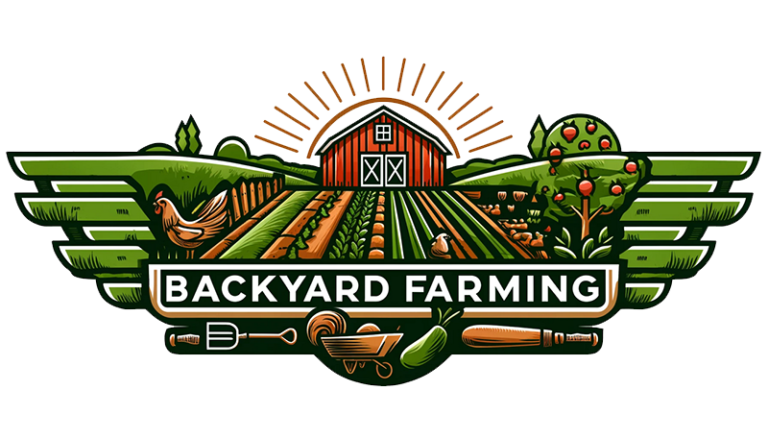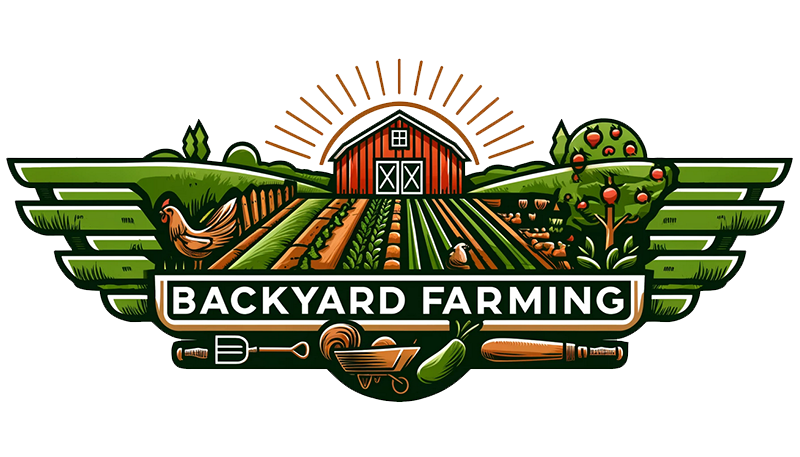Welcome to Backyard Farming Life, your ultimate destination for transforming your backyard into a flourishing food-producing farm. In this article, we’ll explore the common mistakes that beginners should avoid in backyard farming. By understanding these pitfalls, you can cultivate a successful and bountiful garden right in your own backyard.
Common Mistakes to Avoid in Backyard Farming
Overplanting
Overplanting in backyard farming is a common mistake that can have detrimental effects on the overall health and productivity of a garden. It occurs when gardeners, especially beginners, plant an excessive number of crops in a given area. This leads to overcrowding, intense competition for essential resources, and challenges in maintaining the garden ecosystem. The impact of overplanting can be significant, and understanding the key aspects of this issue is crucial for successful backyard farming.
Impact on Growth:
When a garden is overplanted, the initial phase may seem promising with lush greenery and abundance, but the long-term effects can be quite the opposite. Overplanting results in overcrowding, causing plants to vie for sunlight, water, and nutrients. This intense competition inhibits their individual growth and overall development, leading to stunted and unhealthy plants. Furthermore, the lack of space for root expansion can further exacerbate the situation, hindering the plants’ ability to establish a strong foundation for growth.
Resource Depletion:
Overplanting not only affects the individual plants but also depletes the overall resources available in the garden. When plants are densely packed, the available resources quickly diminish, leaving the plants stressed and vulnerable to diseases and pests. The competition for resources weakens the natural defense mechanisms of plants, making them more susceptible to infestations and infections. Additionally, nutrient depletion in the soil may occur, further hampering the garden’s vitality.
Challenges in Care:
Maintaining an overplanted garden demands meticulous attention and care to ensure the well-being of each plant. The sheer number of plants makes it difficult to provide adequate care, resulting in compromised health and reduced yields. Pests and diseases find it easier to spread in crowded conditions, requiring constant vigilance and management to prevent outbreaks.
To avoid overplanting and maintain a balanced garden ecosystem, consider the following practical tips:
- Companion Planting: Introduce the concept of companion planting to strategically position plants that complement each other, effectively utilizing space and resources. Select plants that provide natural pest control or enrich the soil, reducing the need for excess planting.
- Succession Planting: Implement succession planting to ensure a continuous harvest throughout the season. This approach reduces the temptation to overplant for an immediate yield and promotes sustainable crop production. By staggering the planting of different crops, you can maximize the use of available space and resources without overcrowding the garden.
- Thinning Out: Regularly evaluate the spacing between plants and remove excess seedlings to create ample room for healthy growth. Thinning out facilitates better air circulation and sunlight exposure, promoting the overall well-being of the garden. Consider using the thinned plants in other areas of the garden or sharing with fellow gardeners to minimize waste.
- Soil Enrichment: Prioritize soil health by incorporating organic matter, compost, and natural fertilizers. Enriched soil supports the growth of plants and enhances their resilience in crowded conditions, mitigating the adverse effects of overplanting. Conduct soil tests to identify any deficiencies and tailor enrichment activities to meet the specific needs of the plants.
- Proper Spacing: Research the recommended spacing for each type of plant to ensure adequate room for growth. Follow spacing guidelines in seed packets or gardening resources to prevent overcrowding and encourage healthy development. Adjusting the layout of the garden to accommodate proper spacing can greatly reduce the negative impact of overplanting.
- Regular Monitoring: Stay vigilant in observing the garden for signs of overcrowding, nutrient deficiencies, and pest infestations. Regular monitoring allows for timely intervention and adjustments to maintain a balanced and thriving garden ecosystem. Utilize tools such as moisture meters, pH testers, and pest traps to proactively address potential issues.
Neglecting Pest Control
One of the most critical mistakes that beginners often make in the realm of backyard farming is the neglect of pest control. This oversight involves the failure to recognize and address the presence of pests and insects, which can have profoundly adverse effects on the health and productivity of the garden.
Pests and insects, known for their destructive behaviors, have the potential to wreak havoc on plants. They can cause extensive and sometimes irreparable damage, compromising the overall well-being of the plants. Common garden pests that pose significant threats include aphids, caterpillars, mites, and slugs, each with their own unique methods of causing harm.
There is a notable risk associated with ignoring the signs of infestation or failing to implement effective pest control measures. The consequences can be severe, leading to substantial crop loss, which directly impacts the quality and quantity of the produce. This, in turn, can have lasting effects on the success and sustainability of the backyard farming venture.
Effective pest control methods encompass a wide range of approaches, from natural remedies to strategic interventions. For instance, companion planting and the introduction of beneficial insects are considered organic and sustainable ways to combat pests. Similarly, the use of organic pesticides and the employment of physical barriers like nets or fences offer effective protection for crops.
Vigilance is key for backyard farmers, and it is essential to regularly inspect the crops for any signs of pest infestation. Early detection of pest issues coupled with prompt and targeted intervention are vital for mitigating the potential damage caused by pests, thereby ensuring a thriving and productive garden.
Ignoring Seasonal Changes
Ignoring seasonal changes can have a detrimental impact on your backyard farming endeavors. Different plants thrive in specific seasons, and it’s essential to align your planting and maintenance activities with the seasonal variations. Failure to consider these changes can result in poor growth, low yields, and frustration. By recognizing and adapting to seasonal shifts, you can optimize the productivity of your backyard farm throughout the year.
Understanding Seasonal Variations
Each season brings its own set of challenges and opportunities for backyard farmers. Understanding how seasonal variations affect plant growth and development is crucial for successful farming. Here’s a brief overview of how different seasons can impact your backyard farming:
- Spring: Spring is the season of new beginnings. It’s characterized by longer daylight hours and warmer temperatures, making it ideal for sowing seeds and nurturing young plants.
- Summer: The summer months are marked by intense heat and dry conditions. Backyard farmers need to focus on proper irrigation and shade provision to prevent heat stress in plants.
- Fall: Fall brings cooler temperatures and shorter days. It’s a time to prepare for the transition into winter by harvesting late-season crops and considering cover crops to protect and enrich the soil.
- Winter: Winter presents the challenge of frost and freezing temperatures. It’s important to select cold-hardy crops and implement frost protection measures to sustain farming activities during this season.
Adapting Farming Practices to Seasons
Adapting your farming practices to suit the changing seasons is key to maintaining a successful backyard farm. Here are some tips for aligning your activities with seasonal variations:
- Plant Selection: Choose plant varieties that are well-suited to the specific conditions of each season, such as cold-tolerant crops for winter and heat-resistant varieties for summer.
- Timing: Pay attention to the timing of planting, fertilizing, and harvesting to coincide with the optimal conditions of each season.
- Protection: Implement protective measures, such as row covers, mulching, and shade structures, to safeguard crops from extreme weather events associated with different seasons.
- Soil Management: Adjust soil management practices, including watering frequency and mulch application, to address the unique moisture and temperature requirements of plants during different seasons.
Conclusion
As you embark on your backyard farming journey, it’s crucial to steer clear of these common mistakes that can hinder your progress. By avoiding overplanting, prioritizing pest control, and acknowledging seasonal changes, you can set the stage for a thriving and sustainable garden. Remember, cultivating a successful backyard farm takes time, patience, and continuous learning. Through careful attention and strategic planning, you can transform your backyard into a flourishing oasis of fresh produce and natural abundance.

